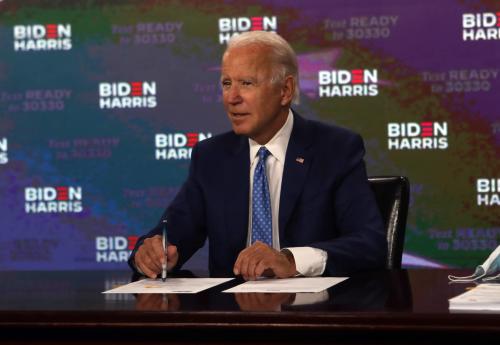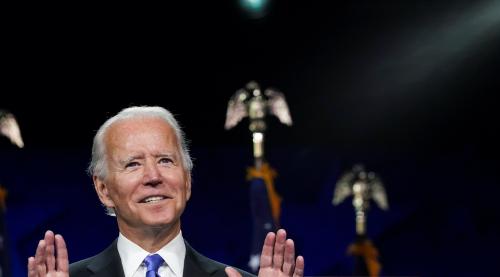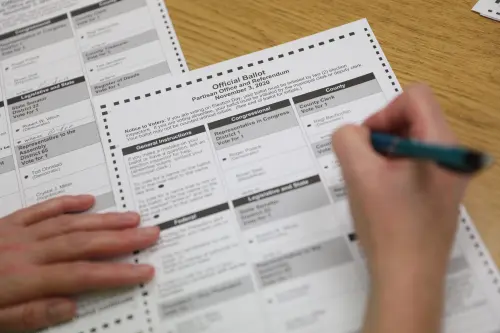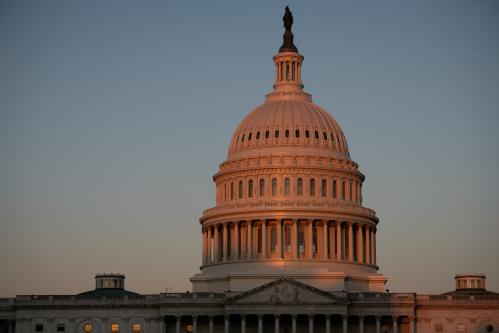Now that the two major party nominating conventions are over it looks like the overall strategic situation is unchanged. If the election were held today Donald Trump would lose.
What can Trump do to narrow the gap enough to eke out a victory in the Electoral College?
First, he can try to rewrite the narrative on his handling of the pandemic, the central problem on the minds of Americans today. Although most of the speakers ignored it, the administration’s headliners, First Lady Melania Trump and Vice President Mike Pence, did their best to defend the president’s record. The first lady opened with a heavy dose of empathy for Americans who have suffered during the pandemic, assuring people “you are not alone… my husband’s administration will not stop fighting until there is an effective vaccine.” And Vice President Pence claimed that “we’re slowing the spread… we’re opening up America again… and we’re opening up America’s schools,” ignoring the reality that the premature opening up of states, especially in the south, brought the virus back with a vengeance and that most of our schools are not able to conduct business as usual.
If changing the narrative on the pandemic is tough, changing the narrative on Trump’s character will be tougher. The one constant theme running through the Democratic convention was Trump’s lack of empathy for those who are suffering. In a tacit acknowledgement of this problem, Wednesday’s convention featured a long line of (mostly) women telling personal anecdotes about Trump’s humanity. Many of these women were related to him by blood or marriage or they worked for him, reducing the credibility of the message. It is doubtful that testimonials to his kindness, however numerous, will change many minds. Trump has little choice but to lean into what he really is—a ruthlessly determined man who will use all available means to fulfill his promises to the American people.
Then there’s race. The president believes that Black men will respond to his macho presentation of self, allowing him to cut into the Black vote enough to repeat his 2016 triumphs in Wisconsin and Michigan. (He has given up on Black women.) But his appeals to Black men cut against his strategy for recapturing the white suburban women who abandoned the Republicans in the 2018 midterms. Trump and his allies are appealing to white fears that Democrats will encourage African Americans to move into single-family-home suburbs, bringing crime and lower property values—a strategy symbolized by Mark and Patricia McCloskey, the gun-toting St. Louis couple who brandished weapons as a Black Lives Matter protest moved past their house. “President Trump will defend the God-given right of every American to protect their homes and families,” said Mark McCloskey in his convention remarks. He didn’t have to say against whom.
Nor did the other convention speakers who addressed the law and order issue. Charlie Kirk, leader of a student organization, led the charge on Monday night: “This election is a choice between preserving America as we know it and eliminating everything we love…Trump is the bodyguard of western civilization. The American way of life means… you honor God… it is being dismantled by a group of deceitful activists—who are releasing violent criminals from prison… we will build monuments to heroes, not burn down our cities.” “Even as anarchists tear up American cities,” said Daniel Cameron, the Republican (and African American) Attorney General of Kentucky, “We will not accept an all-out assault on western civilization.” And Vice President Pence said, “The choice in this election is whether America remains America… or whether we will leave them something that is fundamentally transformed to something else.”
By themselves, the strategies on display during the first three days of the Republican convention are unlikely to close the gap that separates Trump from his challenger. As the president strode to the podium at the end of day four, he had two additional options. The first was to shift the focus from his performance during his first term by laying out a compelling vision for the next four years. After nearly an hour at the podium Trump did lay out a vision for the future, but it was a rushed, almost perfunctory recitation of bullet-points.
The real energy of the speech lay in the alternative strategy—turning the election into a choice rather than a referendum on President Trump’s first term or a competition over plans for the next four years. Trump would have the voters believe that Joe Biden is a “Trojan horse for socialism” too weak to stand up to Bernie Sanders and the radical socialist left, a candidate who if elected president would “demolish the suburbs.”
In the recent past this strategy of disqualifying the challenger has worked for incumbent presidents; recall the Swift boat campaign against John Kerry and the effort to portray Mitt Romney as a heartless plutocrat from Bain Capital. In 2016, voters who disliked both Trump and Hillary Clinton broke strongly for the Republican candidate, a feat that now-president Trump hopes to repeat this year.
But there are two key differences between 2020 and earlier elections. First, the attacks on Kerry in 2004 and Romney in 2012 were focused and effective, and they began well before the party conventions. By the time Kerry and Romney delivered their acceptance speeches, they were already on the defensive. In contrast, the Trump campaign against Biden in the spring and early summer was unfocused and ineffective. It remains to be seen whether the main lines of attack that emerged during the Republican convention—that Biden is a dupe of the left who will not protect middle-class American families against anarchist riots—will strike a chord among undecided voters in the suburbs, and whether there’s enough time left to change the public’s impression of Joe Biden’s character and competence.
The second key difference: unlike 2016, the voters who dislike both major party candidates are breaking for Biden this year. Tearing down the challenger may not be enough to persuade them to choose the incumbent as the safer bet. President Trump is many things, but “safe” isn’t one of them.
During the Republican convention, President Trump’s strategy for closing the gap became clear: intensify his support among white working-class voters while diminishing opposition among white suburbanites (especially women) and peeling off enough African American men to prevail in the Blue Wall states—Wisconsin, Michigan, and Pennsylvania—whose electoral college votes put him over the top in 2016. The alternative—tacking to the center and softening his tone to broaden his appeal—seems not to have been considered. For their part, Democrats are hoping that they can bring out record numbers of young people and minorities while holding onto the suburban gains they made in 2018.
One thing is clear: the suburbs will be the central battleground in 2020, and both parties face challenges. If Republicans persuade suburban voters that Democrats will not stand up to violence and looting, President Trump could win a come-from-behind victory. If Democrats persuade these voters that Republicans are trying to win the election with racist dog-whistles, the result could be a Biden landslide.
Whatever the outcome, the next 66 days won’t be dull. Stay tuned.








Commentary
What can Trump do to eke out a victory in the Electoral College?
August 28, 2020